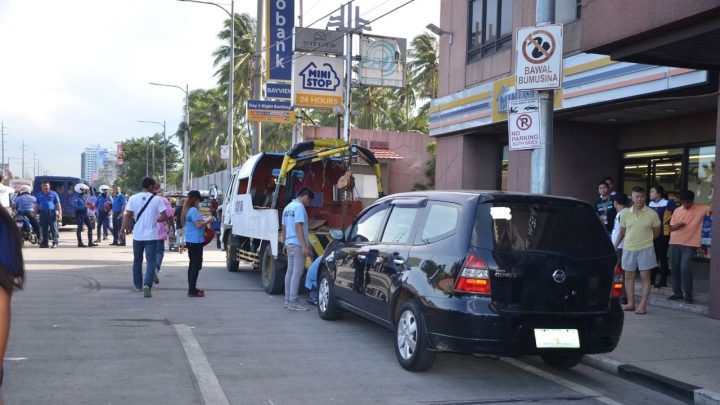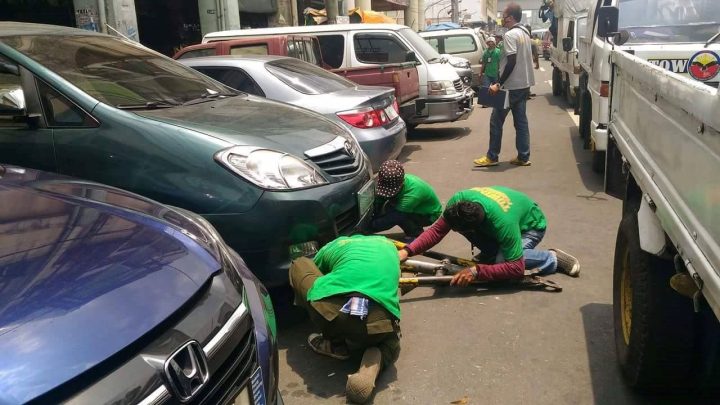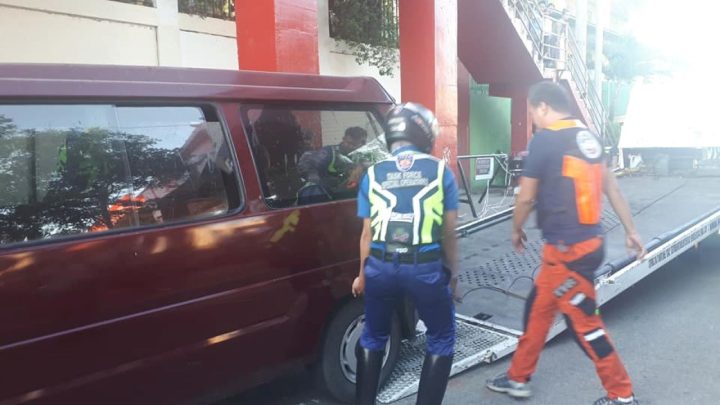
If there’s one thing that vehicle owners are really wary of, it’s getting their cars towed. It’s one thing to require a towing service yourself – say, to get a project car on a “wrecker” to bring it to your trusted shop – but having it pulled by the MMDA is another thing. What motorists need to keep in mind is there are certain situations when the MMDA can tow your vehicle. If that does happen, many are caught unaware of what to do next.Here’s a quick guide on need-to-know information and your next steps should you find your vehicle (being) towed by the MMDA.
What situations allow the MMDA to tow a vehicle?
Table of Contents

Photo: MMDA Facebook Page
There are three situations that motor vehicle owners need to keep in mind.
First, if their vehicle is stalled on any road, it can be taken. “Stalled” is defined as a motor vehicle that is unusable (AKA junk or dilapidated) and cannot move on its own power. If your car breaks down on any street or thoroughfare and a tow truck stops to take it, that is legal.
Second, if a vehicle is illegally parked, that’s grounds for towing, too. This is where it gets tricky given the many no parking areas or zones around the Metro. That, plus an “illegally parked vehicle” has two definitions. But let’s get to no parking areas and zones first.
For your guidance, you cannot park:
- along all national roads in Metro Manila
- along primary or secondary roads of cities and municipalities in Metro Manila
- within six (6) meters of any intersection or curved lane
- within four (4) meters of driveways or entrances of fire stations, hospitals, clinics, and other similar establishments
- within four (4) meters of fire hydrants
- on the roadside of any legally parked vehicle
- on pedestrian lanes
- in front of any (authorized) driveway
- on sidewalks, alleys, or paths not intended for parking
- near or along all footbridges
- all places where official signs indicate a No Parking Zone
- other areas declared as No Parking Zones provided by law or ordinances
Third, if your vehicle is involved in an accident that impedes the flow of traffic, then it can be taken. This is quite self-explanatory.
Now that you know the conditions that warrant it, let’s look at the process of actually towing the vehicle.
The Towing Process

Photo: MMDA Facebook Page
There are two situations that are addressed differently before taking a vehicle for a ride on the wrecker.
If the vehicle is attended to by a driver, then it shall not be taken. Instead, its driver will be issued a ticket by the traffic or HPG-deputized officer. This condition is straightforward, so if you know you’re not supposed to park there, just don’t. Take note as well that no one from the towing crew is allowed to board an attended vehicle at any time. If this happens with the driver present, this must be reported as a violation to the MMDA.
On the other hand, if the vehicle is left unattended, then the towing crew will blow their truck’s horn five times to alert the owner. After one minute, they will again blow their horn five times. If by this time, no one takes responsibility for the vehicle, then the towing shall commence. Notice shall be given to the owner through any traffic officer on-duty at the site, or any responsible person who may know the vehicle owner. Information on which impounding site the vehicle was taken to will be included in the notice – either in Tumana, Marikina City, or the HK Plaza Impound, according to the MMDA’s current (updated on 2019) guidelines found online.
With knowledge of where the vehicle’s been taken, its owner must now go through the process of payment.
Payment after towing
Depending on the exact violation that warranted towing, the fines are as follows:
- Attended, illegally parked vehicle = PHP 1,000USD 17INR 1,445EUR 16CNY 124
- Unattended, illegally parked vehicle = PHP 2,000USD 34INR 2,891EUR 33CNY 248
- Obstruction = PHP 1,000USD 17INR 1,445EUR 16CNY 124
A standard towing fee will be added on top of these fines as well. These said fees will be collected by both government and private entities.
- Light vehicles (weighing less than 4,500 Kg) = PHP 1,500USD 25INR 2,168EUR 25CNY 186 for the first 4 km, PHP 200USD 3INR 289EUR 3CNY 25 for each succeeding km up to the impounding area
- Medium vehicles (weighing between 4,501 and 7,500 kg) = PHP 2,500USD 42INR 3,613EUR 41CNY 310 for the first 4 km, PHP 200USD 3INR 289EUR 3CNY 25 for each succeeding km up to the impounding area
- Heavy vehicles (weighing 7,501 kg and above) = PHP 4,500USD 76INR 6,504EUR 74CNY 558 for the first 4 km, PHP 200USD 3INR 289EUR 3CNY 25 for each succeeding km up to the impounding area
My vehicle was damaged after being towed

Photo: MMDA Facebook Page
Before the actual towing, the towing crew will issue a Technical Inspection Report. It’s in this document that information such as the vehicle’s owner’s name, plate number, type, color, included accessories, and a description of the vehicle’s condition is indicated. If possible, we advise the person responsible for the vehicle to be towed to check what’s in the document.
Any losses or damage that befalls the vehicle during the towing process and is not indicated in the Report will be paid for by the company or agency handling the towing.
On the same token, it’s worth noting that there are two kinds of MMDA tow trucks. There are the MMDA Road Emergency Group trucks, and there are the MMDA-accredited tow trucks. The former is only allowed to tow stalled vehicles involved in accidents and is free of charge. The latter is for other towing requirements. If you’re uncertain of a crew’s accreditation, you can call the MMDA at 136 or check their website for a list of their accredited agencies.
Circumstances that do not automatically warrant towing
There are some instances where we can’t help but stop our vehicles. Remember that as long as the vehicle can be moved, it should be moved. Otherwise, it will be towed.
In the case of a flat tire, for example, it has to be changed in the service bay and not along the road. But whether it can be moved or not, an Ordinance Violation Report (OVR) will be issued, regardless.
Did your vehicle just run out of gas? If you can push it to a nearby gas station, then good. If not, then it may be taken along with the accompanying fees. An OVR will be issued in this situation as well.
Ultimately, if engine trouble causes a vehicle to stall or be illegally parked, then that is grounds for towing if it cannot move on its own, or if the owner refuses to move it to a proper place. In this case, a Traffic Violation Report will be handed out.
–

Photo: MMDA Facebook Page
Having our vehicles taken for a ride on a truck is very much avoidable. If you look at our streets and a good number of motorists, it’s not even mechanical problems that make for a great number of towed vehicles.
Ignorance of the law and ordinances are not excuses that justify what’s wrong. If you can’t stop there, if you can’t park there, if you’ll end up blocking the flow of traffic, save yourself the hassle and find a proper place to park your vehicle and wait. That’s the quickest way to not have your vehicle taken away by the MMDA.
And if you find yourself in a situation that needs the services of a wrecker, then keep the details above in mind. That way you know know how to deal with it accordingly, where to go, and how you can reclaim your vehicle after its costly joyride without you behind the wheel.


